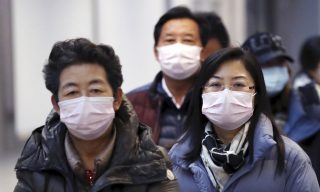On the 7th of January, Chinese authorities confirmed the identity of “nCoV”, a new virus within the family of an existent coronavirus. Coronavirus belongs in a family of viruses that cause illnesses that include the common cold, and deadlier diseases like MERS-CoV and SARS-CoV.
Common symptoms of infection include fever, cough, shortness of breath and breathing difficulties. These symptoms can advance into pneumonia, severe acute respiratory syndrome, kidney failure and death.
The first cases of nCoV were reported as pneumonia on December 31st, 2019 in Wuhan, Hubei Province of China. Since then, the number of infected persons has increased to over 2,700 cases in China alone, with 80 confirmed deaths.
In tackling the outbreak, the Chinese government has locked down 13 cities and over 50 million people in a massive quarantine effort, banning everyone from travelling. China’s National Health Commission and ministry of finance have given out $8.74bn to help contain the spread of the virus, as the government rushes to build a 1000 bed hospital in a week to specifically to treat nCoV.
Cases are also increasingly being confirmed in neighbouring countries and in some European countries. So far, cases have been confirmed in the following countries:
Thailand – 8 confirmed cases
The United States – 5 confirmed cases
France – 3 confirmed cases
Japan – 3 confirmed cases
Malaysia – 3 confirmed cases
Singapore – 4 confirmed cases
Australia – 5 confirmed cases
Vietnam – 2 confirmed cases
South Korea – 4 confirmed cases
Nepal – 1 confirmed case
As the virus spreads across countries and continents, governments are seeking ways to evacuate their citizens from affected provinces and cities in China, while others implement stiff travel policies against people from the affected regions. Japan, Germany, the UK, and Spain have all expressed working on strategies to evacuate their citizens from the epicentre.
Malaysia has imposed a temporary ban on Chinese visitors from Wuhan and Hubei provinces. Mongolia has closed its border crossing with China. And Macau is denying entry to visitors from Hubei unless they can prove that they are not infected. In Russia, tourism packages to China have stopped. And in Hong Kong, citizens are calling for a border closure with mainland China.
Despite these alarming statistics, the World Health Organization refused to declare the outbreak a public health emergency of international concern (PHEIC) after a meeting with its Emergency Committee last Wednesday and Thursday, 22nd and 23rd of January.
“At this time, there is no evidence of human-to-human transmission outside China. That doesn’t mean it won’t happen. Make no mistake,” Tedros Adhanom Ghebreyesus, the director-general of WHO said at a news conference in Geneva. “This is an emergency in China, but it has not yet become a global health emergency. It may yet become one,” he added.
However, given the nature and mode of transmission of the virus, the general public is advised to take preemptive measures to reduce exposure to, and transmission of nCoV. WHO recommends the following hand and respiratory hygiene, and safe food practices:
- Frequently clean hands by using alcohol-based hand rub or soap and water;
- When coughing and sneezing cover mouth and nose with flexed elbow or tissue. Used tissues are to be discarded immediately and hands washed;
- Avoid close contact with anyone who has a fever and cough;
- If you have a fever, cough and difficulty breathing, seek medical care early and share previous travel history with your health care provider;
- When visiting markets in areas currently experiencing cases of nCoV, avoid direct unprotected contact with animals and surfaces in contact with animals;
- The consumption of raw or undercooked animal products should be avoided. Raw meat, milk or animal organs should be handled with care, to avoid cross-contamination with uncooked foods, as per good food safety practices.
All countries are advised to be prepared for containment, as more exported cases of the virus are expected. Containment measures should include active surveillance, early detection, isolation and case management, tracing of contact and prevention of further spread. Countries must also notify WHO of nCoV cases and share full data following a stipulated set of guidance.








